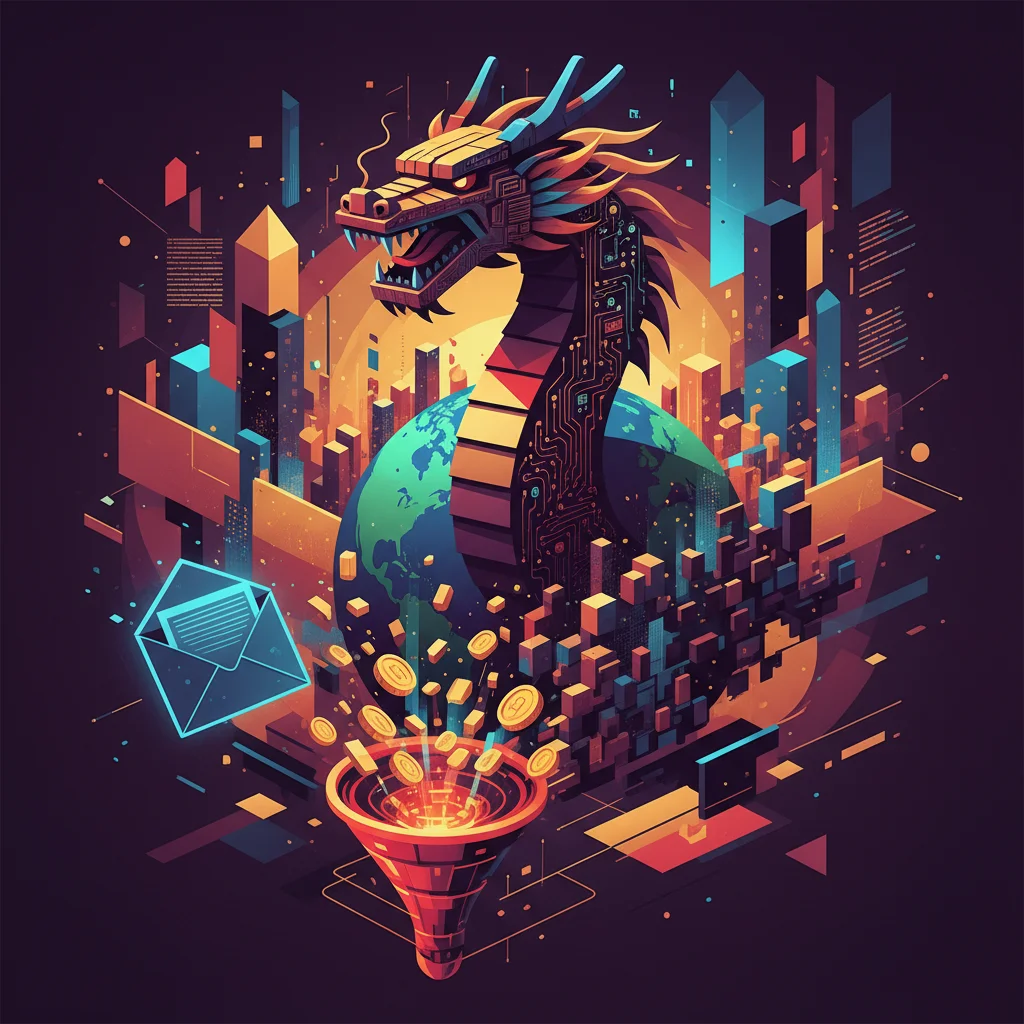
China’s AI Gambit: A Stark Warning for the Global Economy and Investors
It began with a simple, yet chilling, letter to the Financial Times. Penned by Peter Hardwick of Manchester, UK, the message was just 16 words long, but its implications are vast enough to redefine the global economic landscape for the next century: “We’ve been warned: every school in China teaches AI.”
This isn’t hyperbole. It’s a statement of fact that should serve as a wake-up call for business leaders, finance professionals, and investors across the Western world. While we debate the ethics of chatbots and the future of creative jobs, a strategic, nation-wide mobilization is underway on the other side of the globe. China is not just participating in the AI race; it is systematically building an entire generation to dominate it. This isn’t merely an educational initiative; it’s a calculated move with profound consequences for the global economy, international investing, and the future of financial technology.
For anyone involved in the stock market, banking, or strategic economic planning, ignoring this tectonic shift is a luxury we cannot afford. The foundations of global power are being re-architected, one classroom at a time.
The Dragon’s Blueprint: More Than Just a Curriculum
The integration of AI into every level of Chinese education is the grassroots component of a much larger, state-driven ambition. In 2017, China’s State Council released its “Next Generation Artificial Intelligence Development Plan,” a comprehensive roadmap to become the world’s primary AI innovation center by 2030. The plan outlines a three-step strategy: catch up with the US on AI technology and application by 2020, achieve major breakthroughs to become a world-leader in some AI fields by 2025, and finally, achieve total supremacy by 2030, with a core AI industry worth over 1 trillion RMB (approx. $150 billion) (source).
This isn’t just a policy paper; it’s a declaration of intent. The plan mobilizes the full force of the state, directing public and private capital towards specific AI goals. Think of it as the 21st-century equivalent of the Apollo program, but with a scope that touches every facet of society, from military applications and urban governance to fintech and healthcare.
The educational mandate is the foundation of this pyramid. By creating a vast talent pool with native AI literacy, China is ensuring a sustainable, long-term advantage. While Western universities produce elite AI PhDs, China is aiming for a populace where understanding algorithms is as fundamental as basic arithmetic. This creates a powerful feedback loop: a larger talent pool fuels more innovation, which in turn drives economic growth and strengthens the state’s strategic position.
High Stakes: Are UK Betting Firms Bluffing on Tax Hikes?
Rethinking Investment Strategy in an AI-Polarized World
For investors, this new reality demands a fundamental recalibration of risk and opportunity. The global stock market is no longer just a reflection of corporate earnings; it’s increasingly a proxy for this geopolitical technology race. Here’s how the landscape is changing:
- The New “Picks and Shovels”: The most direct way to invest in the AI boom is through the enabling technologies. This means semiconductor companies designing advanced chips (like GPUs and TPUs), data center providers, and cybersecurity firms. As both East and West pour trillions into building out their AI infrastructure, these sectors are poised for sustained growth.
- Geopolitical Risk is Paramount: A company’s exposure to US-China trade tensions is now a critical due diligence item. Supply chain dependencies, particularly in the tech sector, can become sudden liabilities. Investors must look for companies with resilient, diversified supply chains or those that are “re-shoring” critical production.
- The Rise of National Champions: In China, state support is creating AI behemoths like Baidu, Alibaba, and Tencent, which have unparalleled access to data and government contracts. In the West, companies like NVIDIA, Google, and Microsoft are the standard-bearers. Investing in this new era means understanding the competitive advantages and regulatory risks facing these national champions on both sides of the divide.
- A New Frontier in Fintech: The world of finance is a primary battleground. AI is revolutionizing everything from high-frequency trading algorithms to credit scoring and fraud detection. Chinese fintech giants, powered by vast datasets and a supportive regulatory environment, are innovating at a breakneck pace. Consider the potential convergence of AI with blockchain technology to create hyper-efficient and secure financial systems. The companies that master this synthesis will redefine the future of banking.
A Tale of Two Systems: The West’s Challenge
The strategic divergence between China and the West in their approach to AI could not be more stark. Understanding this difference is crucial for any long-term economic or investment thesis.
Below is a simplified comparison of the two dominant approaches to AI development:
| Metric | China’s State-Led Approach | The West’s Market-Led Approach |
|---|---|---|
| Core Driver | Top-down, national strategic mandate (“Next Generation AI Development Plan”). | Bottom-up, driven by private sector competition and consumer demand. |
| Data Access | Centralized, vast datasets from a large population with fewer privacy restrictions, fueling state and corporate AI models. | Fragmented, protected by regulations like GDPR and CCPA, posing challenges for large-scale model training. |
| Education | Standardized, nationwide AI curriculum from primary school upwards to build a massive talent pipeline. | Concentrated in higher education and specialized programs, leading to a smaller pool of elite experts. |
| Capital Allocation | Significant state funding and subsidies directed towards strategic AI sectors (e.g., facial recognition, autonomous vehicles). | Primarily driven by venture capital and corporate R&D, focusing on near-term commercial viability. |
| Key Weakness | Potential for stifled creativity and innovation due to rigid, top-down control. Risk of misallocating capital on state-favored projects. | Lack of a unified national strategy can lead to duplicated efforts and gaps in critical, less-profitable research areas (e.g., long-term AI safety). |
While the Western model has historically fostered groundbreaking, paradigm-shifting innovation, China’s approach is designed for rapid, scaled implementation. They may not have invented the core technologies behind large language models, but their ability to deploy AI in a real-world, city-scale environment is unparalleled. A study by the Australian Strategic Policy Institute found that China leads the world in 37 out of 44 critical and emerging technology fields, including AI, advanced materials, and robotics (source). This highlights the effectiveness of their focused, state-driven model.
The Economic Shockwave: What Happens Next?
The long-term implications for global economics are staggering. The nation that leads in AI will likely set the standards for the next generation of technology, from autonomous transportation and smart cities to the very infrastructure of global finance. This leadership translates directly into economic power and geopolitical influence.
We are facing the prospect of a bifurcated technological world. One sphere may operate on Western-developed platforms and standards, emphasizing user privacy and open markets. The other, centered around China, may prioritize state control and data integration. For multinational corporations, navigating these two ecosystems will become a monumental challenge, impacting everything from product design to data governance.
The impact on the labor market will also be profound. China’s mass AI literacy program could mitigate some of the job displacement risks associated with automation, creating a workforce adept at working alongside AI. Western economies, without a similar comprehensive strategy, may face greater social and economic friction as they transition. A recent report from Goldman Sachs suggests that generative AI could expose the equivalent of 300 million full-time jobs to automation globally (source). Preparing the workforce for this shift is no longer an option; it is an economic imperative.
Steel Over Startups: Decoding the UK's High-Stakes Pivot in Industrial Strategy
The Final Warning: From Classroom to Boardroom
Peter Hardwick’s 16-word letter was not just an observation; it was an alarm bell. The lessons being taught in China’s classrooms today will be implemented in the world’s boardrooms, trading floors, and R&D labs tomorrow. The race for AI dominance is not a distant, abstract concept—it is happening now, and its outcome will directly impact your investments, your business, and the economic future of the West.
For investors and business leaders, the call to action is clear. We must educate ourselves, adapt our strategies, and advocate for policies that foster innovation while preparing our societies for the profound changes ahead. The first step is acknowledging the warning we’ve been given. The second is to act on it with the urgency it deserves.


